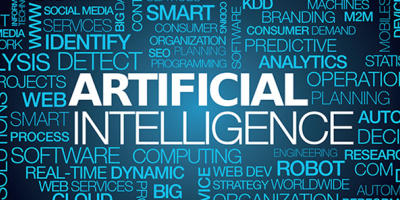Artificial intelligence (AI) represents a once-in-a-lifetime change management opportunity that might decide who wins and losses across every industry. As the AI era takes shape through digital transformation initiatives, executives and employees alike are contemplating how it affects employment and the skills needed to stay ahead. This is where AI upskilling and reskilling come into play.
How executives and employees view the era of AI
An IBM Institute for Business Value report found that more than 60% of executives say that generative AI will disrupt how their organization designs customer and employee experiences. Employees need to change to meet those needs. Many are turning to AI upskilling, the act of preparing the workforce with skills and education to empower them to use AI to do their jobs.
A 2024 Gallup poll found that nearly 25% of workers worry that their jobs can become obsolete because of AI, up from 15% in 2021. In the same study, over 70% of chief human resources officers (CHRO) predicted AI would replace jobs within the next 3 years.
The World Economic Forum estimated that automation will displace 85 million jobs by 2025, and 40% of core skills will change for workers in its Future of Jobs Report 2023. AI will usher in a new era of productivity and value, and business leaders in the C-suite should make employees part of that future.
Every organization is responsible for providing its workforce with the requisite skill sets and education to use AI in their daily jobs. CHROs, specifically, should take a leading role in decision-making when it comes to what skills technology automates and which ones remain mission-critical skills handled by employees.
The rise of AI is fundamentally remaking corporate strategy. Executives must enhance AI capabilities, such as using generative AI tools, throughout the workforce. They must provide opportunities to develop employees’ skills as the AI takes on some of the previous tasks handled by humans.
Employees are interested in learning advanced technical skills that can harness the power of AI to make their jobs more efficient and their career paths more successful. Organizations have a vested interest in upskilling their employees to better use new technologies such as AI in their daily activities to enhance productivity and improve problem solving.
Upskilling versus reskilling
Upskilling and reskilling are separate but important components of an organization’s approach to talent development and skill building. The first, upskilling, is the process of improving employee skill sets through training and development programs. The goal is to minimize skill gaps and prepare employees for changes in their job roles or functions. An example of upskilling is customer care representatives learning how to use generative AI and chatbots to better answer customer questions in real time with prompt engineering.
Reskilling refers to learning an entire set of new skills to do a new job. For example, someone who currently works in data processing might need to embrace reskilling to learn web development or advanced data analytics.
Executives estimate about 40% of their workforce needs to reskill over the next 3 years, according to the IBM Institute for Business Value. But what about upskilling?
Read more about reskilling your workforce in the time of AI
AI upskilling opportunities in disciplines and industries
Like other groundbreaking technologies before it, the evolution of AI is creating opportunities for new industries, new jobs and new approaches to existing jobs. To prepare their people and businesses, organizations must ensure that their employees are equipped with the skills for tomorrow without disrupting today’s business. This is where a range of upskilling use cases are critical for success.
Customer service
Customer service is most CEOs’ top discipline for deploying generative AI, according to an IBM Institute for Business Value report. AI can handle some of the initial queries by customers, but customer service representatives (CSRs) also need to use the tools when issues get escalated to them. CSRs need to improve their ability to do prompt engineering and talk to customers while searching through AI-built databases.
Financial services
Employees in finance increasingly have enhanced tools to help them make better investments on behalf of their clients. Nearly 70% of financial services leaders believe at least half of their workforce requires upskilling in 2024. It requires not only learning how to use these new technologies, but also feeling they can trust the results from AI technologies, even if they cannot completely understand them.
Healthcare
Hospitals and healthcare providers are incorporating AI technologies into their back offices and diagnostic care facilities. For example, healthcare companies are starting to use machine learning technologies to improve and speed up medical diagnoses. Understanding what these technologies can and cannot do remains critical for healthcare professionals to make the right decisions.
Human resources (HR)
Organizations are beginning to use AI in HR—to process job applications and help find the right candidates. HR representatives need to learn how to use this technology to spot potential biases or other uncertainties, so they find valuable prospects.
Web development
Generative AI and other advanced technologies are creating massive opportunities for efficiency in web development. Developers can use it to convert one coding language into another. One such example: applications can refactor COBOL code for mainframes into modular business service components.
How AI can supercharge upskilling opportunities
Organizations can use AI technologies to enhance the AI learning experience itself.
Online learning and development
Using generative AI chatbots and personalization can create more customized learning opportunities for each employee. It can create training programs that combine the foundational AI education any employee needs with specific instruction tailored to the learners’ jobs. As a result, the employee has a robust and tailored set of AI skills that helps them maximize their job capabilities.
Here’s a sample course load for an AI upskilling development program that IBM offers:
- Strategic essentials, such as the rise of generative AI for business and how to become a value creator with generative AI.
- Elements of enterprise AI, such as using data management and generative AI foundation models to drive added value.
- Putting AI to work for specific disciplines, such as marketing, coding or talent development.
On-the-job training
Employees can improve their knowledge and expertise in AI tools by using AI applications while doing their jobs. Using generative AI tools, for instance, can help them answer questions they have about certain processes, while teaching them how to improve their prompts.
Skill-gap analysis
Organizations can input a ton of information about their employees’ performance and certifications and use machine learning to identify areas where they need more training. This approach is a more efficient way to identify gaps than through guesswork or asking employees where they need help.
Mentorship
AI can help large organizations better identify mentors and mentees based on various criteria, such as backgrounds, interests and what they want out of that relationship. An AI program that automatically matches mentors and mentees eliminates a laborious task and drives stronger connections across the organization.
Career path development
Organizations can help employees identify where they want their careers to progress by using AI. It can suggest potential career paths and have them cycle through options until their ideal job.
Why AI upskilling provides added value for organizations
It combines institutional knowledge with advanced capabilities
While AI and other technologies can create opportunities for organizations to automate many processes, they still need employees to provide valuable context. Helping existing employees remain valuable to the organization serves a dual purpose of using their hard-won experience to improve decision-making.
One way to incorporate AI into employee work is using IBM role-based AI assistants with conversation-based interfaces that can support key consulting project roles and tasks.
It fills important gaps
Many AI technologies require humans to operate them or interpret the results. Organizations that try to deploy these technologies without worker assistance can either fail to maximize results or make incorrect decisions.
It improves employee retention
Employees are unlikely to stay at organizations that don’t prioritize the employee experience, which should now include AI skill development. One reason is that they expect their employees to provide lasting skills for their jobs and careers. A second reason is that organizations that are not prioritizing AI are likely to fall behind their competitors.
It embraces the democratization of web development
AI is driving a massive change in web development. The age of AI ushers in a wave of generative AI code development that enables nondevelopers to build code as well. But only if an organization invests in educating its employees on how to use it.
It’s the right thing to do
Organizations owe their employees every chance to remain valuable in a rapidly changing talent landscape. The future of work can leave many unprepared employees behind. Training employees in AI skills helps the organization today, but also provides those employees with a roadmap for future success.






















 More than ever, there is a demand for IT to deliver innovation. Your IBM i has been an essential part of your business operations for years. However, your organization may struggle to maintain the current system and implement new projects. The thousands of customers we've worked with and surveyed state that expectations regarding the digital footprint and vision of the company are not aligned with the current IT environment.
More than ever, there is a demand for IT to deliver innovation. Your IBM i has been an essential part of your business operations for years. However, your organization may struggle to maintain the current system and implement new projects. The thousands of customers we've worked with and surveyed state that expectations regarding the digital footprint and vision of the company are not aligned with the current IT environment. TRY the one package that solves all your document design and printing challenges on all your platforms. Produce bar code labels, electronic forms, ad hoc reports, and RFID tags – without programming! MarkMagic is the only document design and print solution that combines report writing, WYSIWYG label and forms design, and conditional printing in one integrated product. Make sure your data survives when catastrophe hits. Request your trial now! Request Now.
TRY the one package that solves all your document design and printing challenges on all your platforms. Produce bar code labels, electronic forms, ad hoc reports, and RFID tags – without programming! MarkMagic is the only document design and print solution that combines report writing, WYSIWYG label and forms design, and conditional printing in one integrated product. Make sure your data survives when catastrophe hits. Request your trial now! Request Now. Forms of ransomware has been around for over 30 years, and with more and more organizations suffering attacks each year, it continues to endure. What has made ransomware such a durable threat and what is the best way to combat it? In order to prevent ransomware, organizations must first understand how it works.
Forms of ransomware has been around for over 30 years, and with more and more organizations suffering attacks each year, it continues to endure. What has made ransomware such a durable threat and what is the best way to combat it? In order to prevent ransomware, organizations must first understand how it works. Disaster protection is vital to every business. Yet, it often consists of patched together procedures that are prone to error. From automatic backups to data encryption to media management, Robot automates the routine (yet often complex) tasks of iSeries backup and recovery, saving you time and money and making the process safer and more reliable. Automate your backups with the Robot Backup and Recovery Solution. Key features include:
Disaster protection is vital to every business. Yet, it often consists of patched together procedures that are prone to error. From automatic backups to data encryption to media management, Robot automates the routine (yet often complex) tasks of iSeries backup and recovery, saving you time and money and making the process safer and more reliable. Automate your backups with the Robot Backup and Recovery Solution. Key features include: Business users want new applications now. Market and regulatory pressures require faster application updates and delivery into production. Your IBM i developers may be approaching retirement, and you see no sure way to fill their positions with experienced developers. In addition, you may be caught between maintaining your existing applications and the uncertainty of moving to something new.
Business users want new applications now. Market and regulatory pressures require faster application updates and delivery into production. Your IBM i developers may be approaching retirement, and you see no sure way to fill their positions with experienced developers. In addition, you may be caught between maintaining your existing applications and the uncertainty of moving to something new. IT managers hoping to find new IBM i talent are discovering that the pool of experienced RPG programmers and operators or administrators with intimate knowledge of the operating system and the applications that run on it is small. This begs the question: How will you manage the platform that supports such a big part of your business? This guide offers strategies and software suggestions to help you plan IT staffing and resources and smooth the transition after your AS/400 talent retires. Read on to learn:
IT managers hoping to find new IBM i talent are discovering that the pool of experienced RPG programmers and operators or administrators with intimate knowledge of the operating system and the applications that run on it is small. This begs the question: How will you manage the platform that supports such a big part of your business? This guide offers strategies and software suggestions to help you plan IT staffing and resources and smooth the transition after your AS/400 talent retires. Read on to learn:
LATEST COMMENTS
MC Press Online